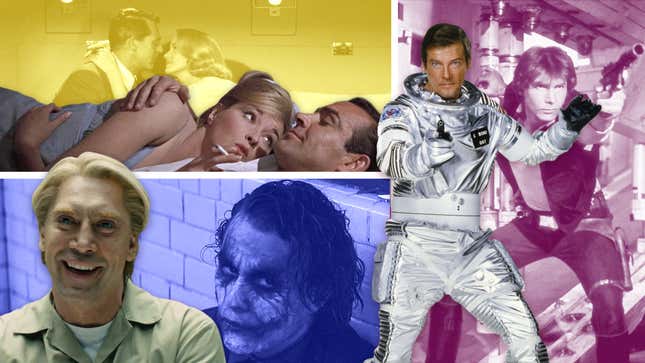
The arrival of No Time To Die marks the 25th entry in the James Bond film franchise, an onscreen run measuring nearly 60 years. To what can 007 attribute that longevity? The ability to pull a new actor into the role every few years helps. So does the moviegoing audience’s bottomless appetite for jet-setting, high-flying stunts, and outlandish villains.
Bond also endures because, like any good secret agent, his skillset includes mimicry and flexibility. The series that launched a wave of bed-hopping, gadget-equipped spies in the 1960s has shown no qualms about swimming in the wake of the action blockbusters that came after it, like Star Wars, Christopher Nolan’s Dark Knight trilogy, or Indiana Jones. It can be shameless in the pursuit of a cinematic trend, like the Blaxploitation trappings adopted by Live And Let Die. Elsewhere, evolving tastes point toward the right fit at just the right moment—like the jumpy energy of the The Bourne Identity channeled into the early Daniel Craig Bonds.
As Carly Simon sings at the beginning of The Spy Who Loved Me, nobody does it better. It’s just that sometimes James Bond learned to do the things he does from other movies.